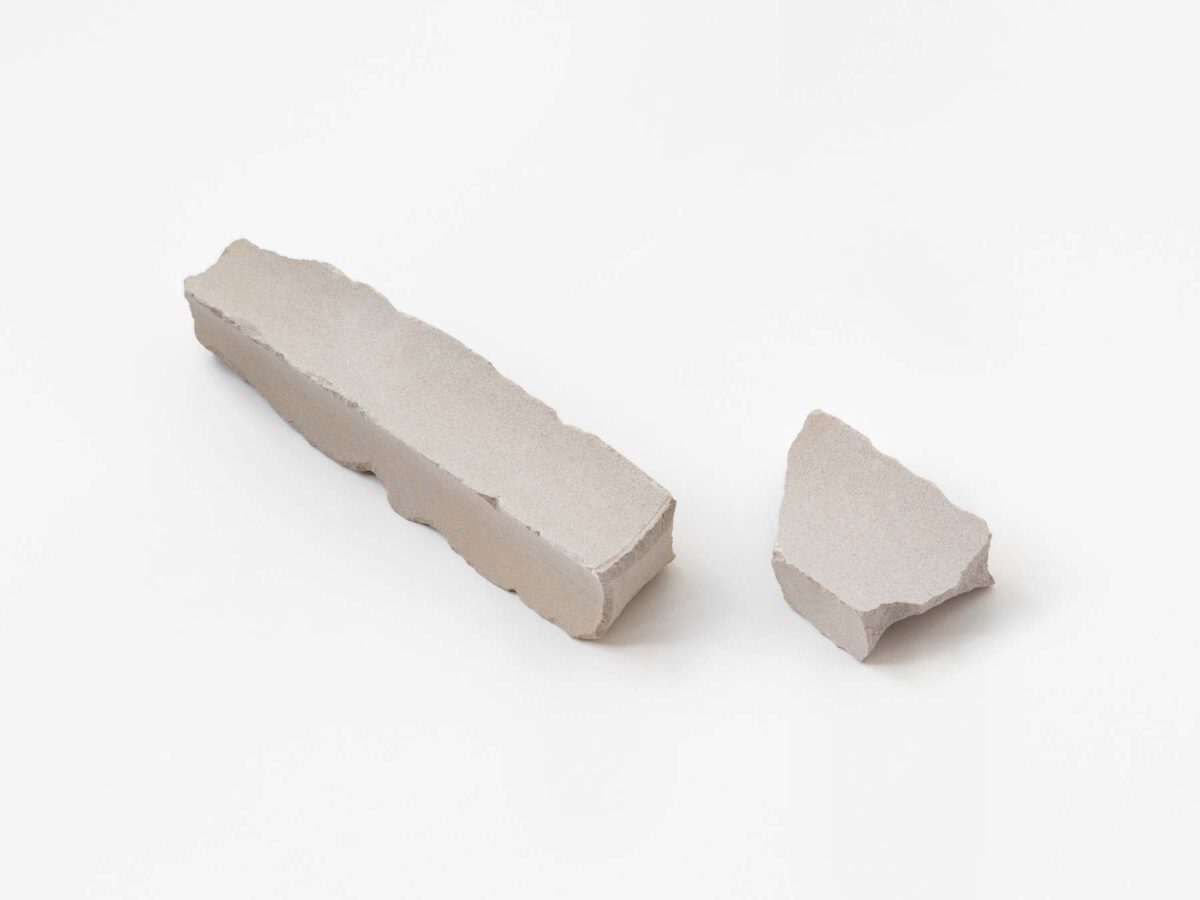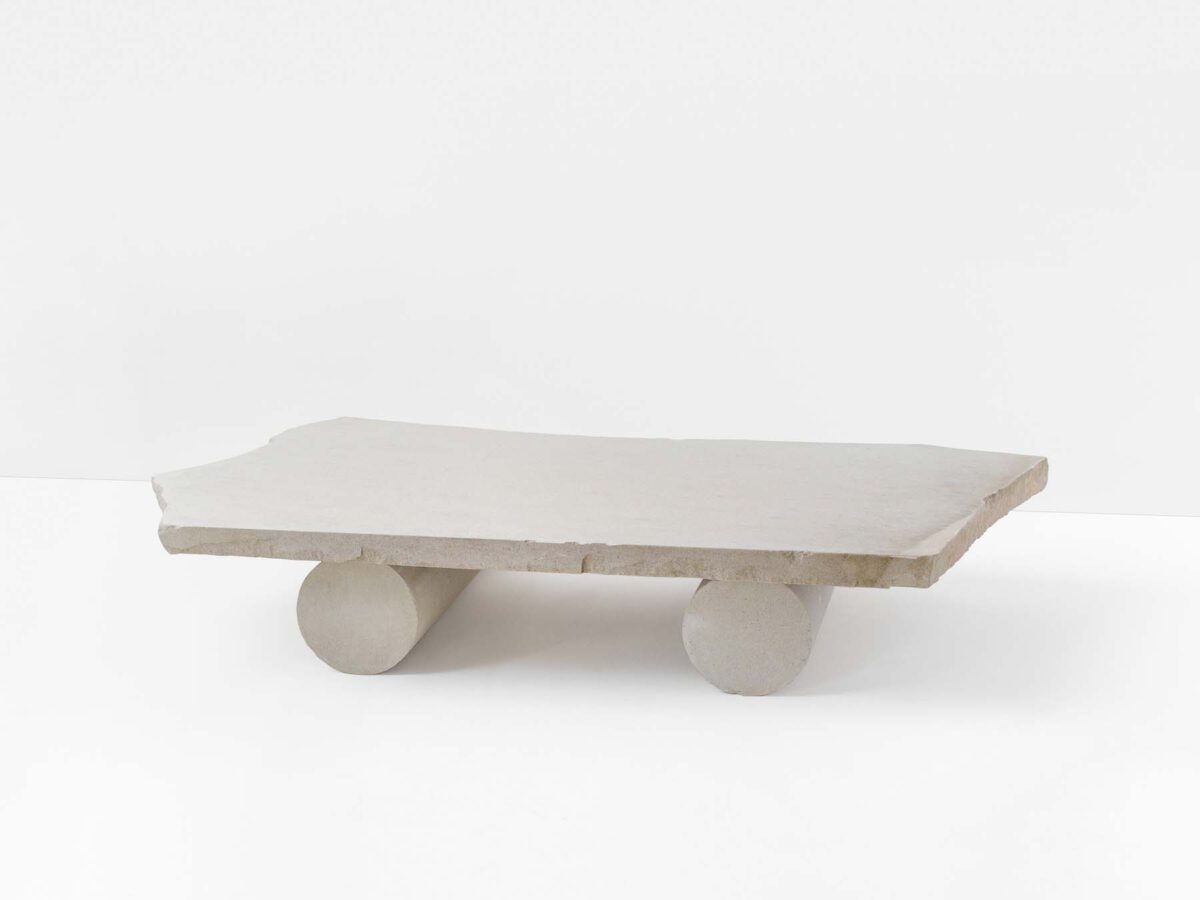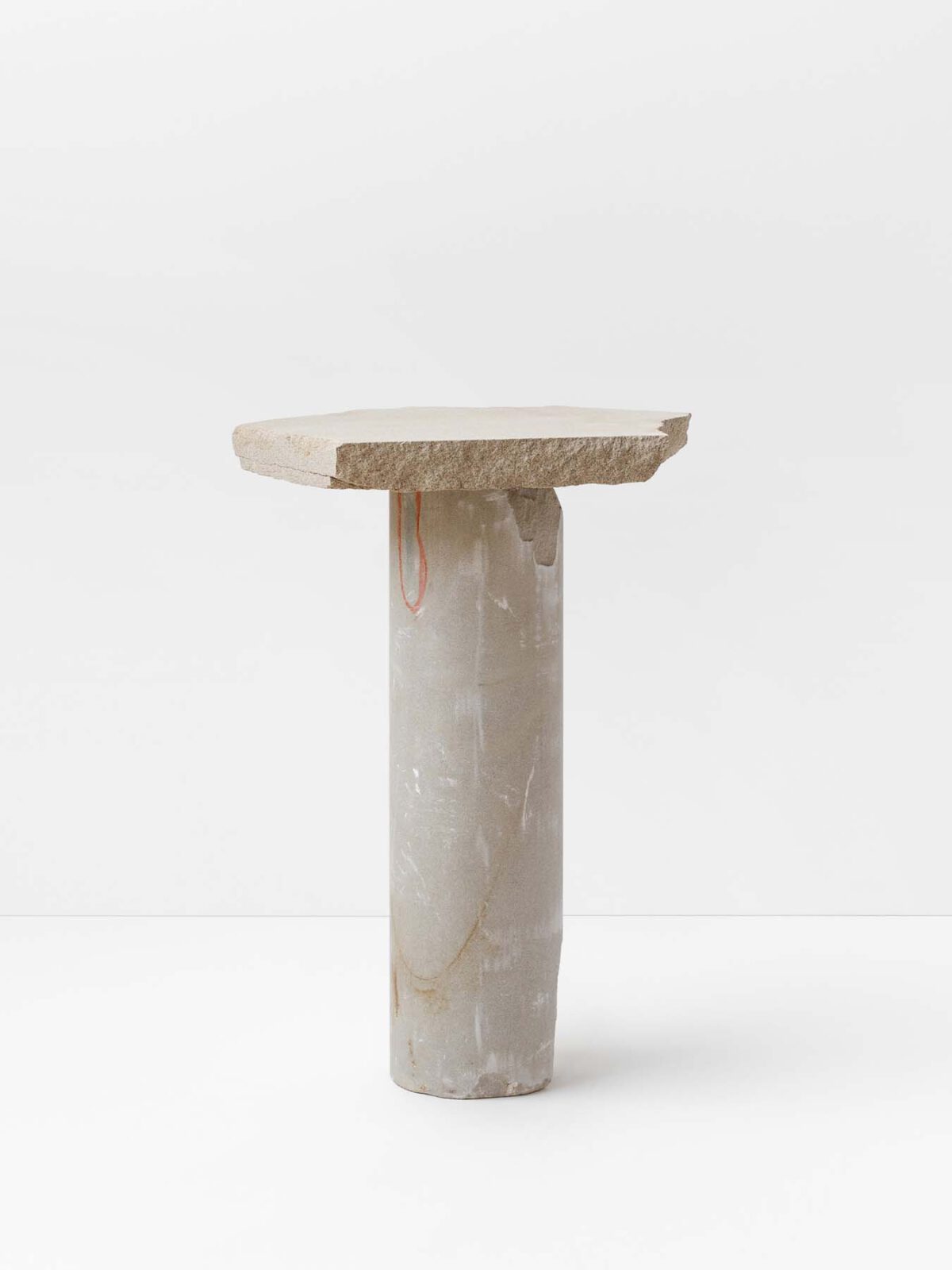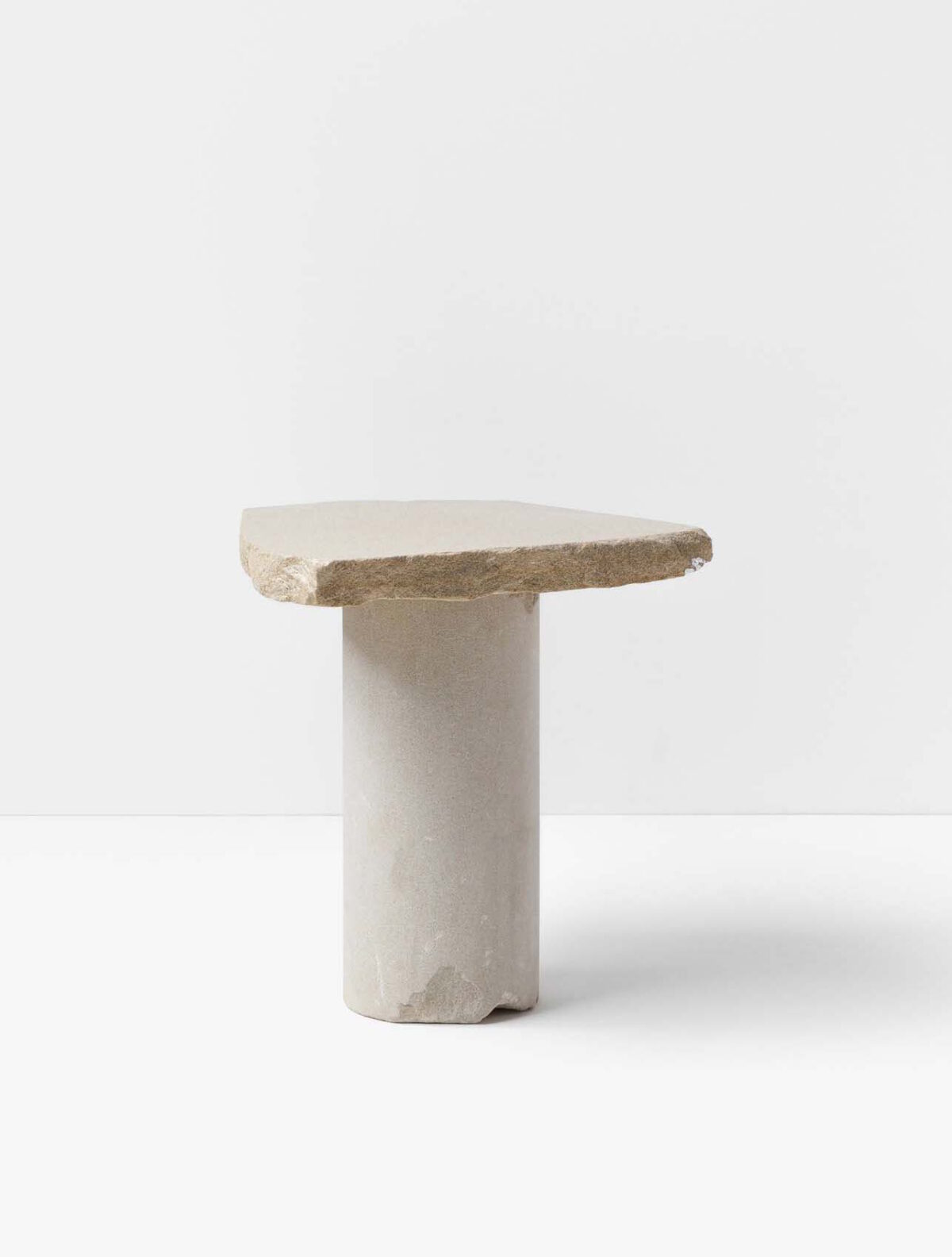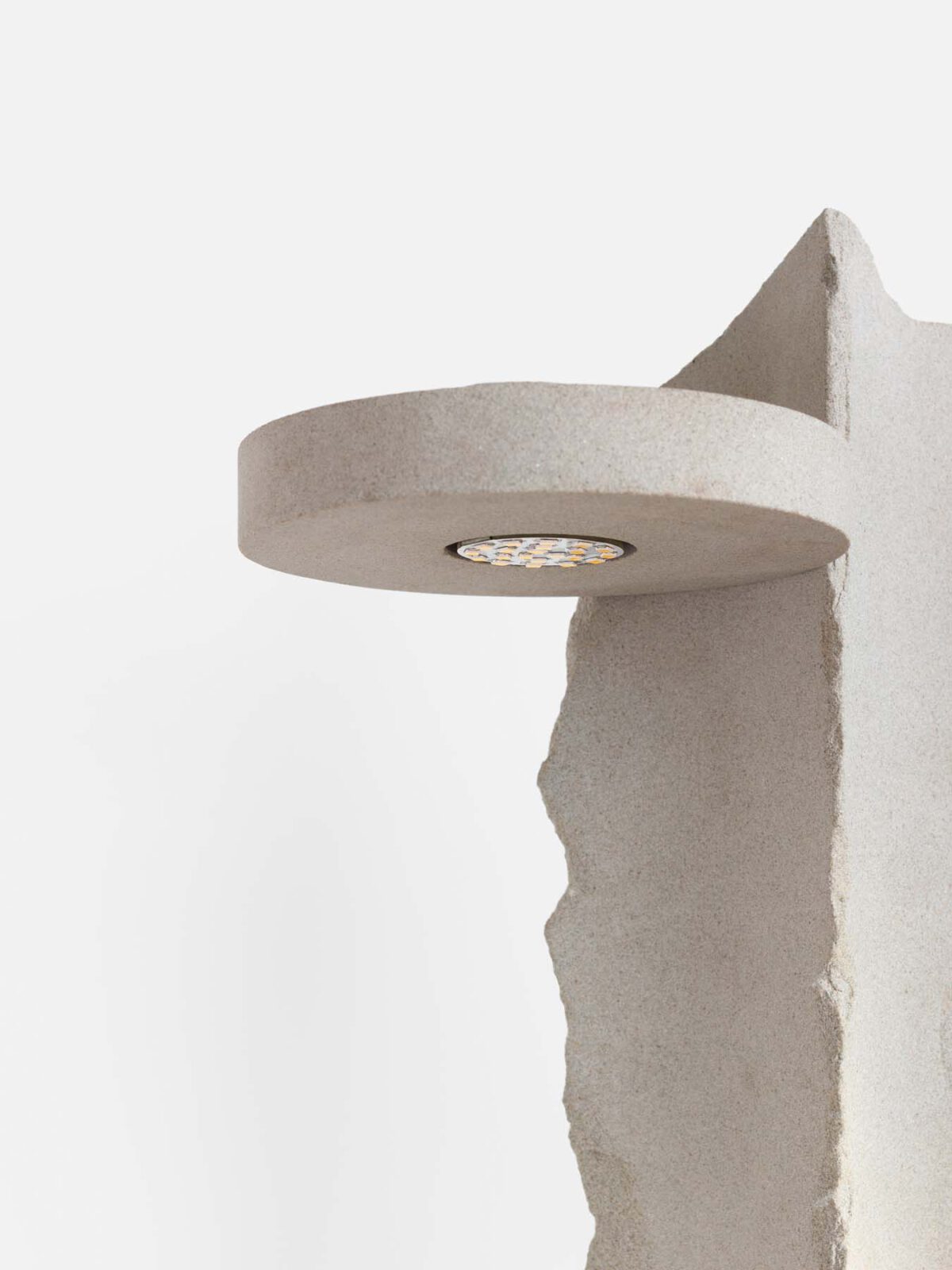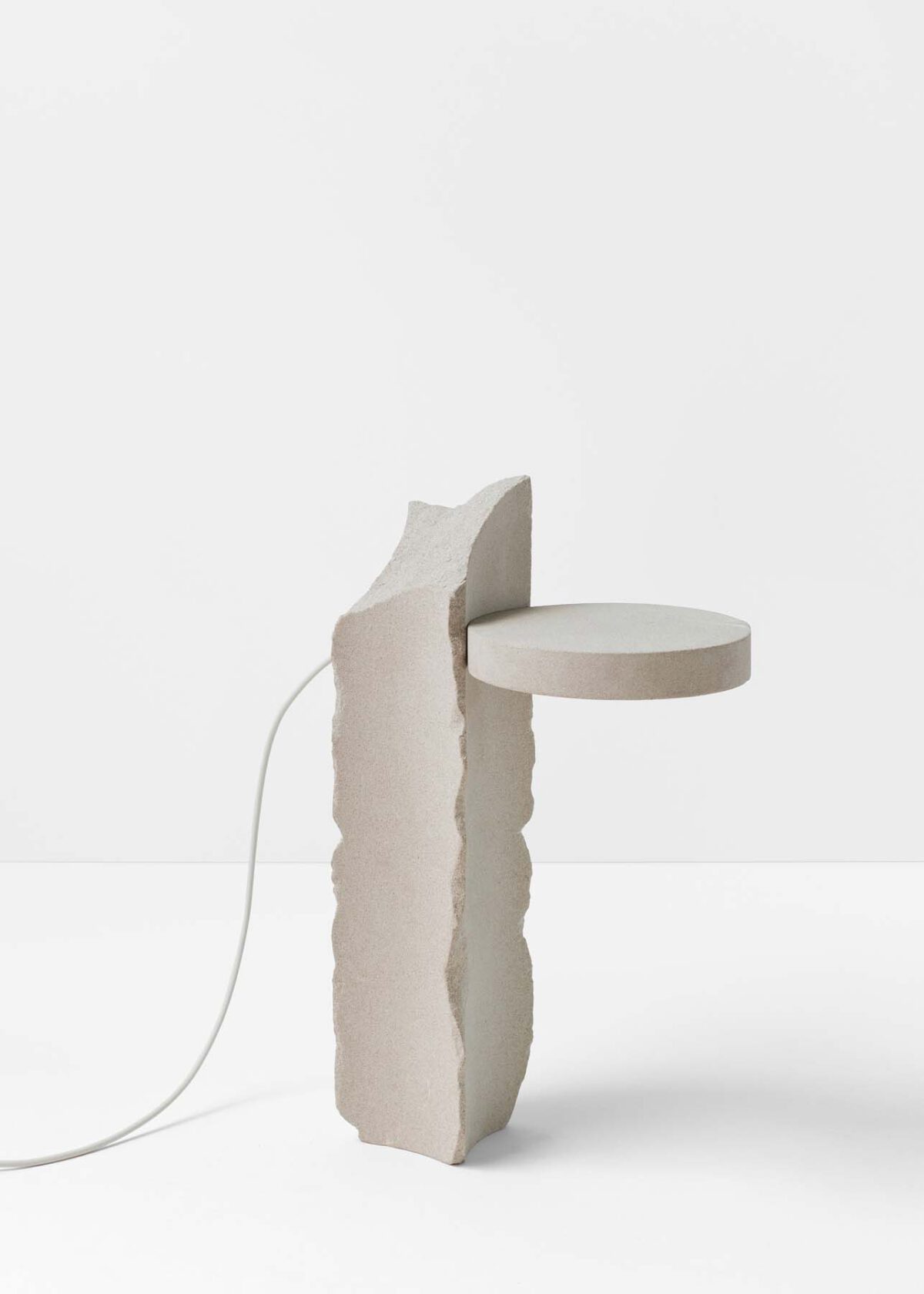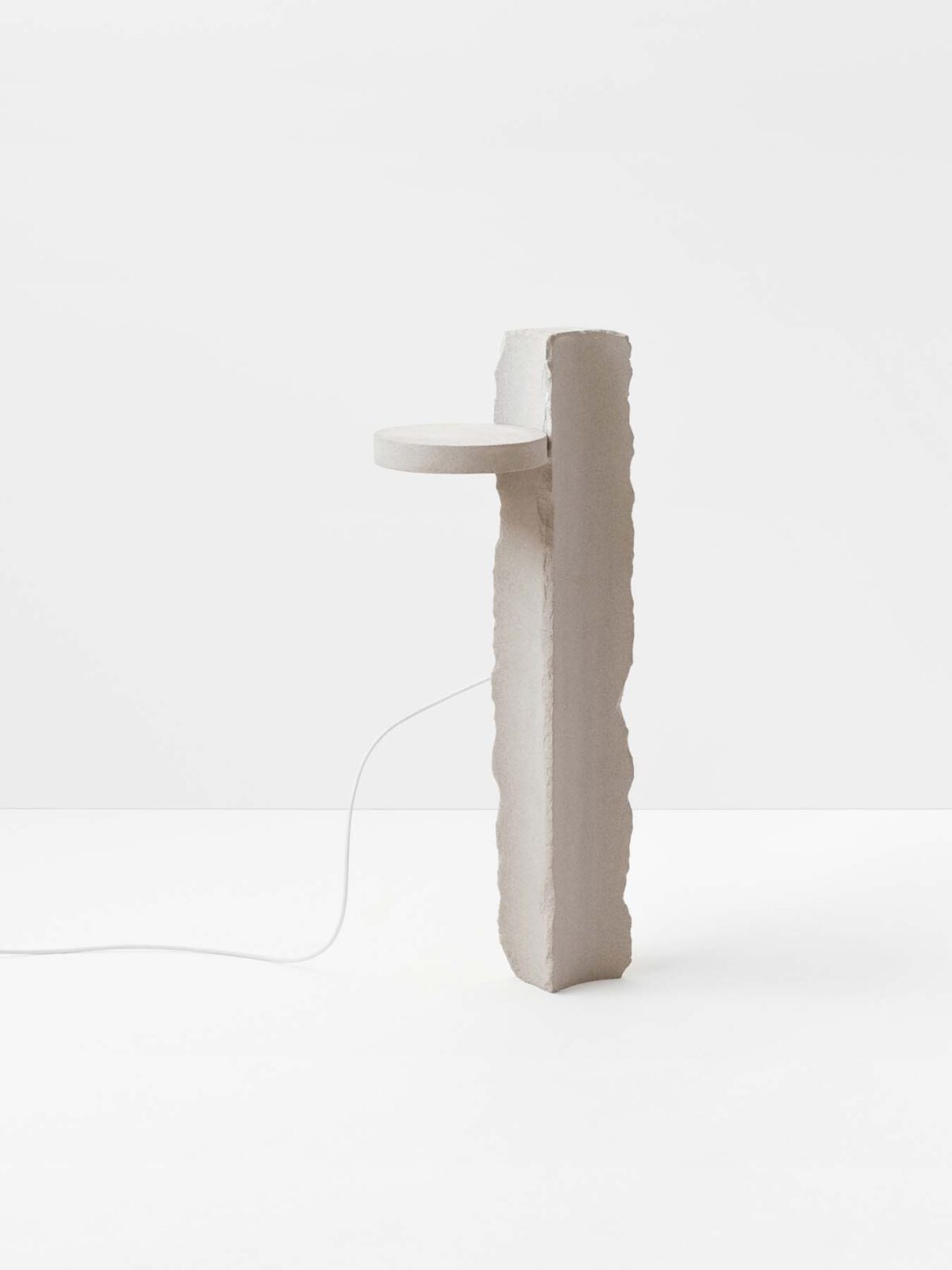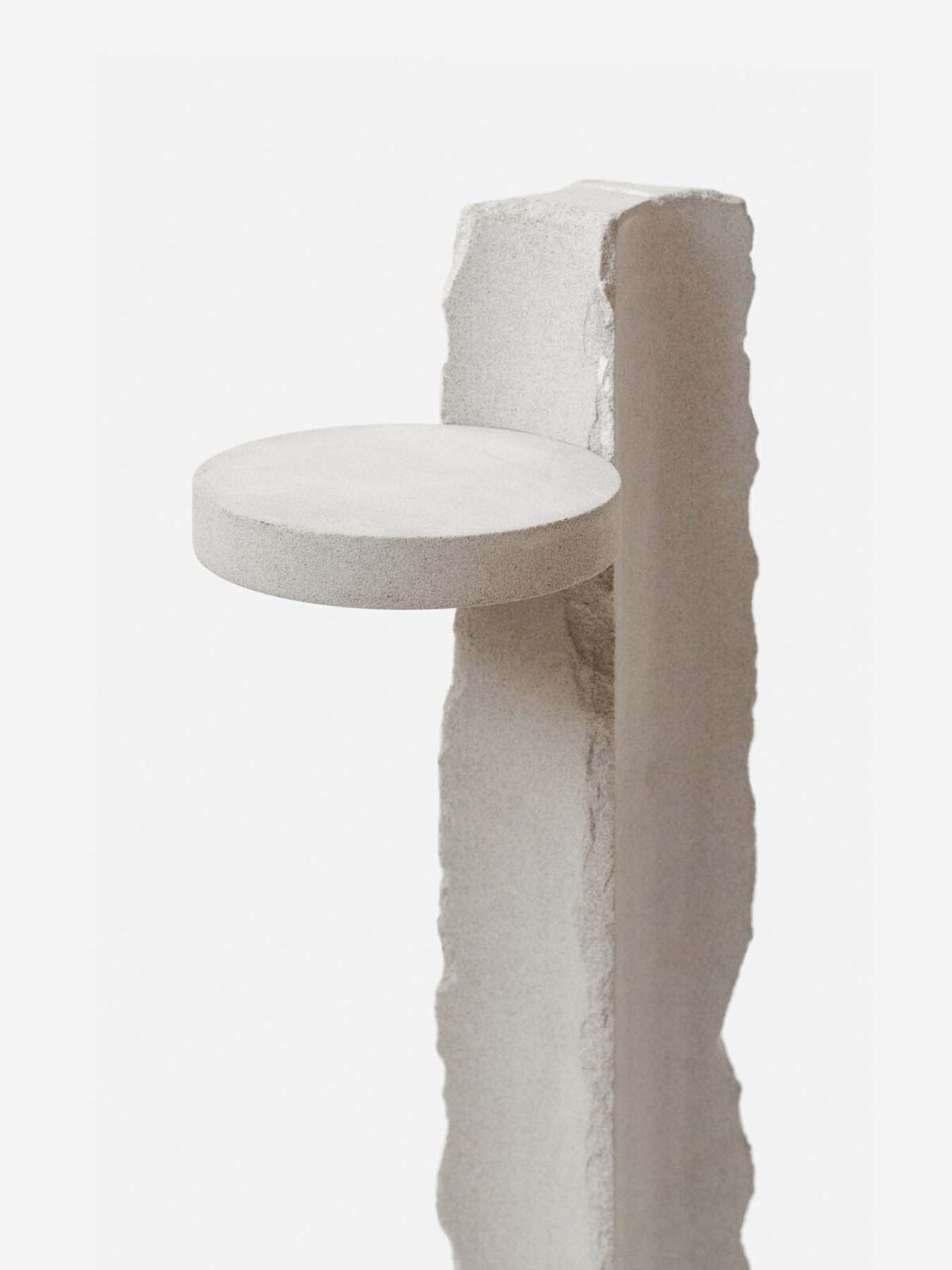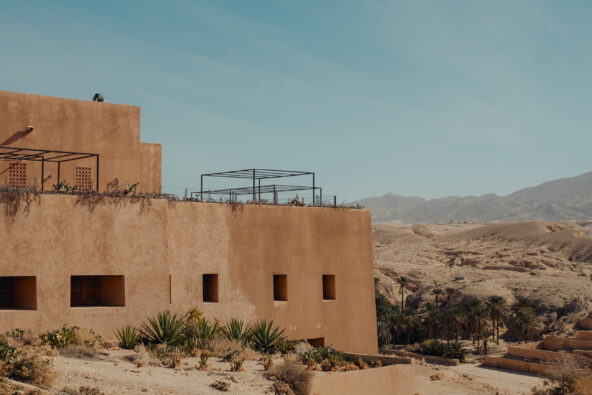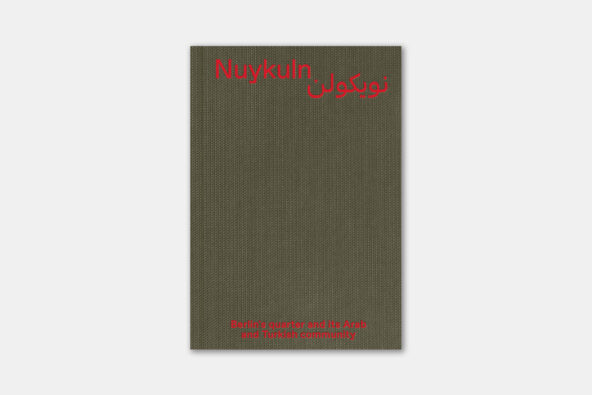Investigating and observing, quarrying and cutting – ‘Berea’
Loraine County, Ohio contains some of the most homogeneous and permeable beds of sandstone in the world. During the summer of 2017 Hank Beyer and Alex Sizemore spent time investigating and observing the operations of a family-owned quarry along the stone formation running from Erie to Adams County. All processes, from quarrying to cutting, occur on the same piece of land.
“No known synthetic material can replace the sandstone used in these experiments.”
Free from faults, mineral impurities and variegation, the finest stone is reserved for cutting petroleum test cores. Ninety-three percent of this strain of stone is pure silica and weighs one hundred and forty pounds per cubic foot. These cores measure four to six inches across and two to four feet long. In a laboratory setting, crude or refined oil mixed with brine is forced from one end of the sandstone core to the other; this process is known as core flooding. Flow rate and pressure changes revealed by these tests provide valuable data used to optimize oil extraction processes. No known synthetic material can replace the sandstone used in these experiments.
After becoming familiar with the quarry, their production methods and various machining procedures, their interest shifted toward the excess of offcuts. In addition to the rough faces cut from larger stones and the negative spaces created while drilling, entire cores are often neglected after a cross-cut reveals an oxidized iron vein.


